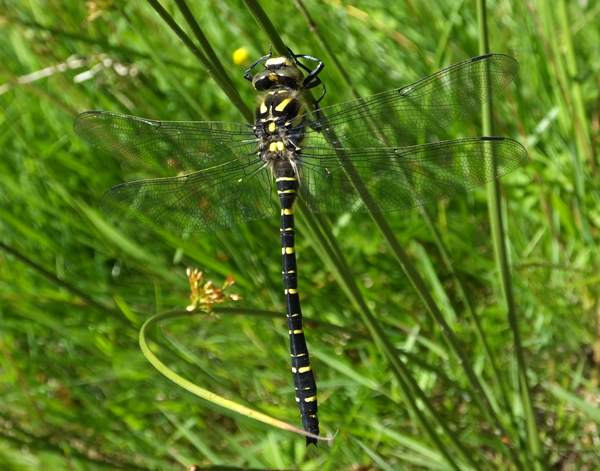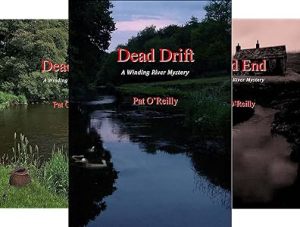Cordulegaster boltonii - Golden-ringed Dragonfly
Phylum: Arthropoda - Class: Insecta - Order: Odonata - Family: Cordulegastridae

Description
The Golden-ringed or Gold-ringed Dragonfly is a beautiful insect with a black body patterned with gold rings and a pair of bright green eyes that just meet at the top of the head.

This is a very large dragonfly and quite noisy when in flight, so that some people find it rather intimidating and fear that it might sting. (It will not, of course!) The male and female are similar in appearance and colouring, but the claspers near the end of the abdomen and the waisted abdomen of the male readily distinguish it from the more cylindrical female, whose body terminates in a long ovipositor. This dragonfly has a wingspan sometimes exceeding 10cm. Body length is typically 7.5cm in males and 8.5cm in females, making it the largest British dragonfly by body length. The picture above and the one immediately below show male Golden-ringed Dragonflies.

Habitat
The Golden-ringed Dragonfly favours acidic rivers and streams, but look out for it also over ponds and lakes that are either fed by or near to suitable flowing water and on wet heaths and moors.
Distribution
In Britain this lovely dragonfly is widely distributed and common in southern England, throughout Wales, and mainly on the western side of northern England and Scotland. (This species is not conclusively confirmed as occurring in Ireland.) On mainland Europe the Golden-ringed Dragonfly is distributed across central and southern countries, and its range extends across the Middle East and in to Asia and parts of India.
Flight period
In the south of Britain, Golden-ringed Dragonflies can be seen on the wing from late May or (most years) early June right through to the end of September. These fast-flying dragonflies sometimes foray well away from their natal river or stream in search of food. While in flight they use their legs as a 'net' to capture other insects, including large butterflies and even bees, which they take to a perch and then eat, discarding the wings.
Excited at the prospect of flyfishing? So are we, and we're pretty sure you would find the Winding River Mystery trilogy of action-packed thrillers gripping reading too. Dead Drift, Dead Cert, and Dead End are Pat O'Reilly's latest river-and-flyfishing based novels, and now they are available in ebook format. Full details on our website here...
Buy each book for just £4.96 on Amazon...
Please Help Us: If you have found this information interesting and useful, please consider helping to keep First Nature online by making a small donation towards the web hosting and internet costs.
Any donations over and above the essential running costs will help support the conservation work of Plantlife, the Rivers Trust and charitable botanic gardens - as do author royalties and publisher proceeds from books by Pat and Sue.
